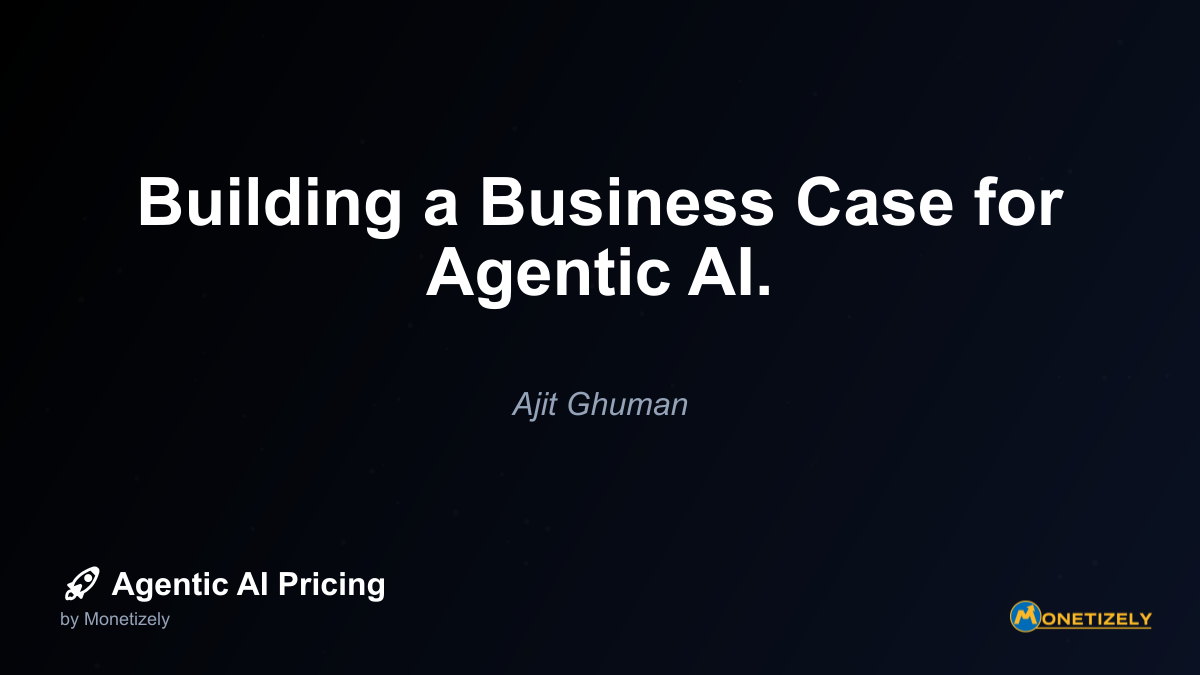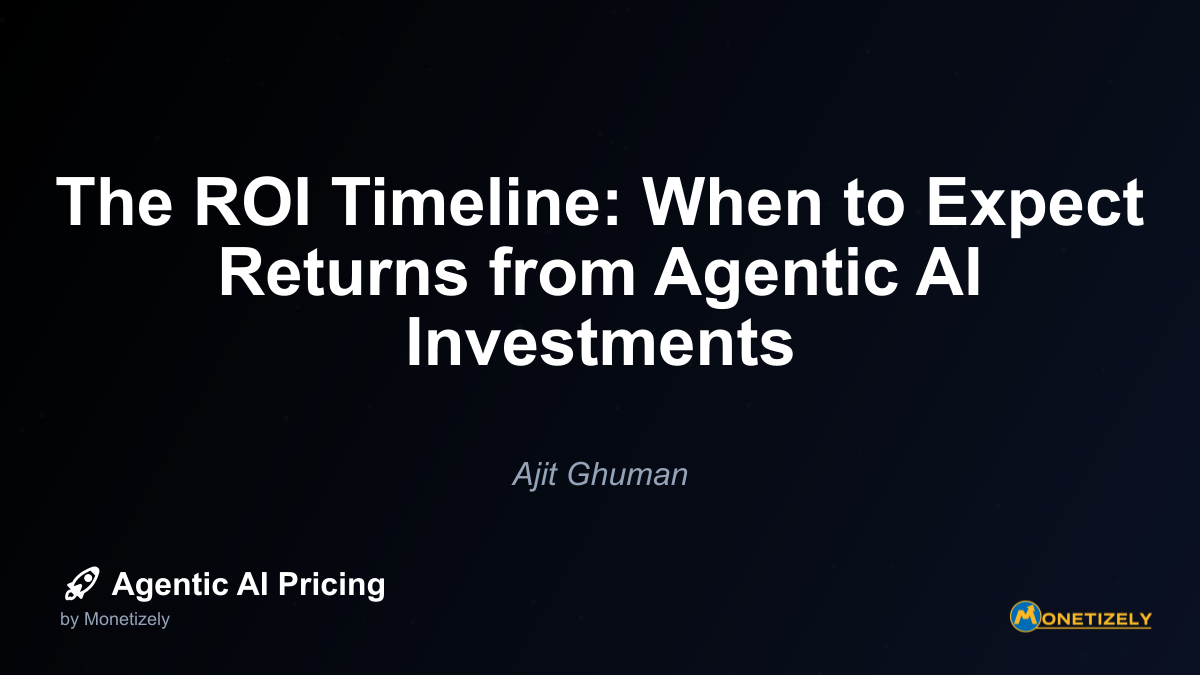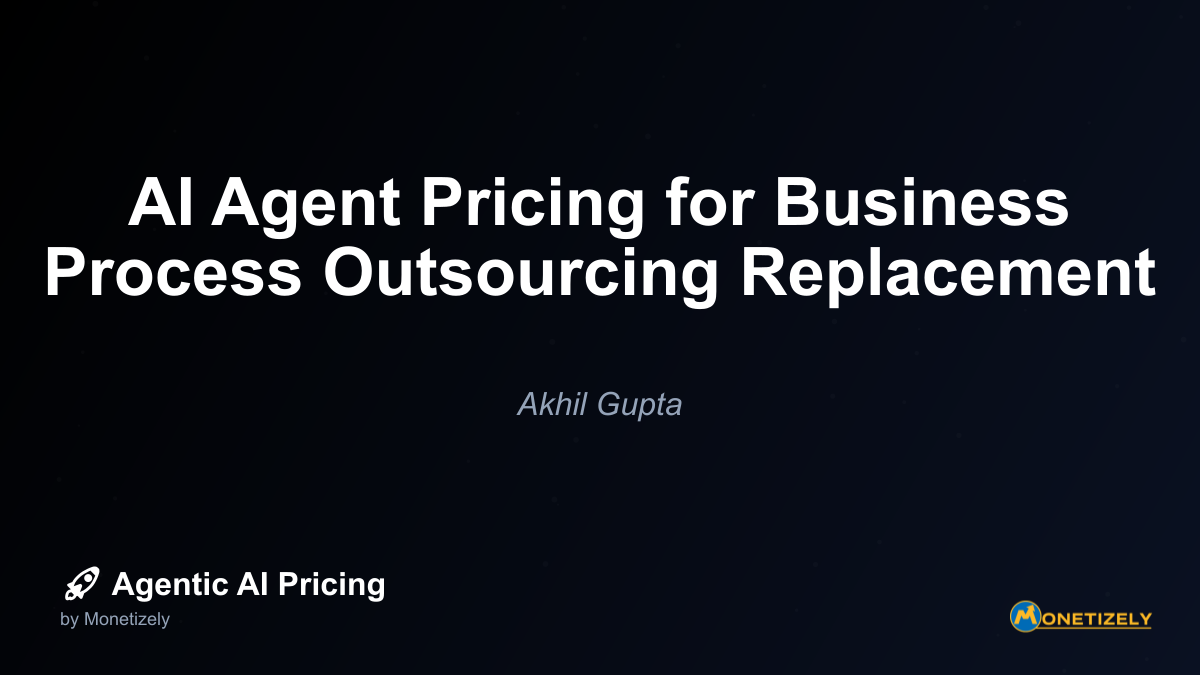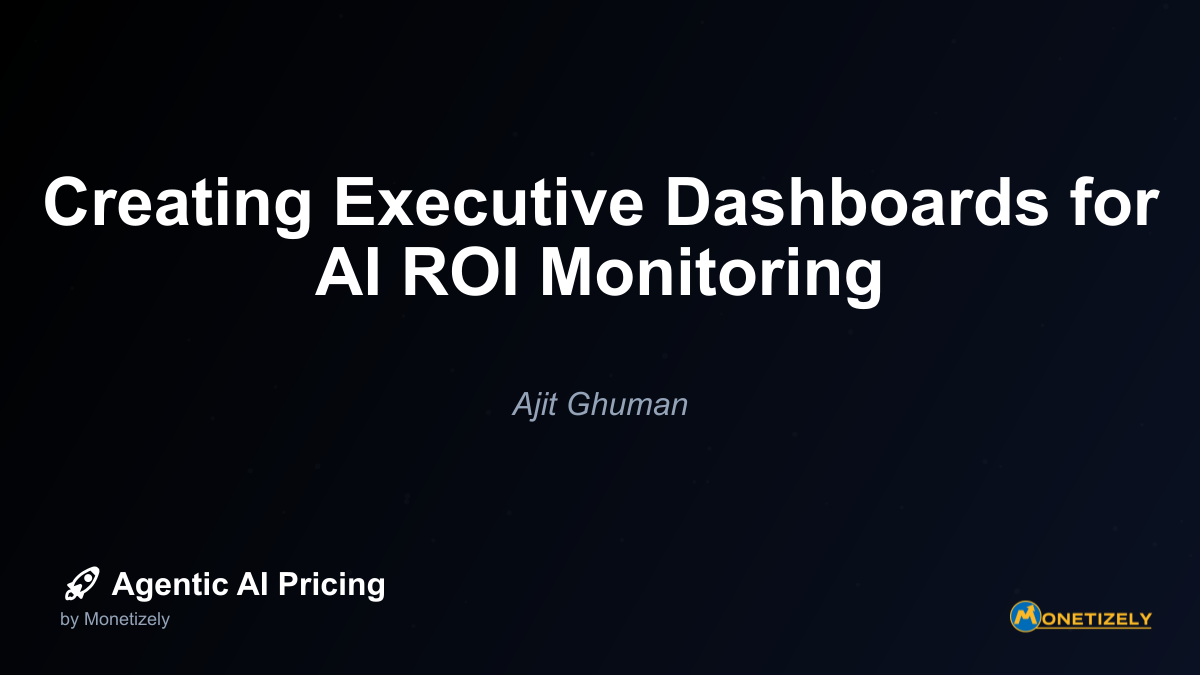· Ajit Ghuman · ROI and Value · 8 min read
Conducting a Cost-Benefit Analysis for AI Investments.
AI and SaaS Pricing Masterclass
Learn the art of strategic pricing directly from industry experts. Our comprehensive course provides frameworks and methodologies for optimizing your pricing strategy in the evolving AI landscape. Earn a professional certification that can be imported directly to your LinkedIn profile.
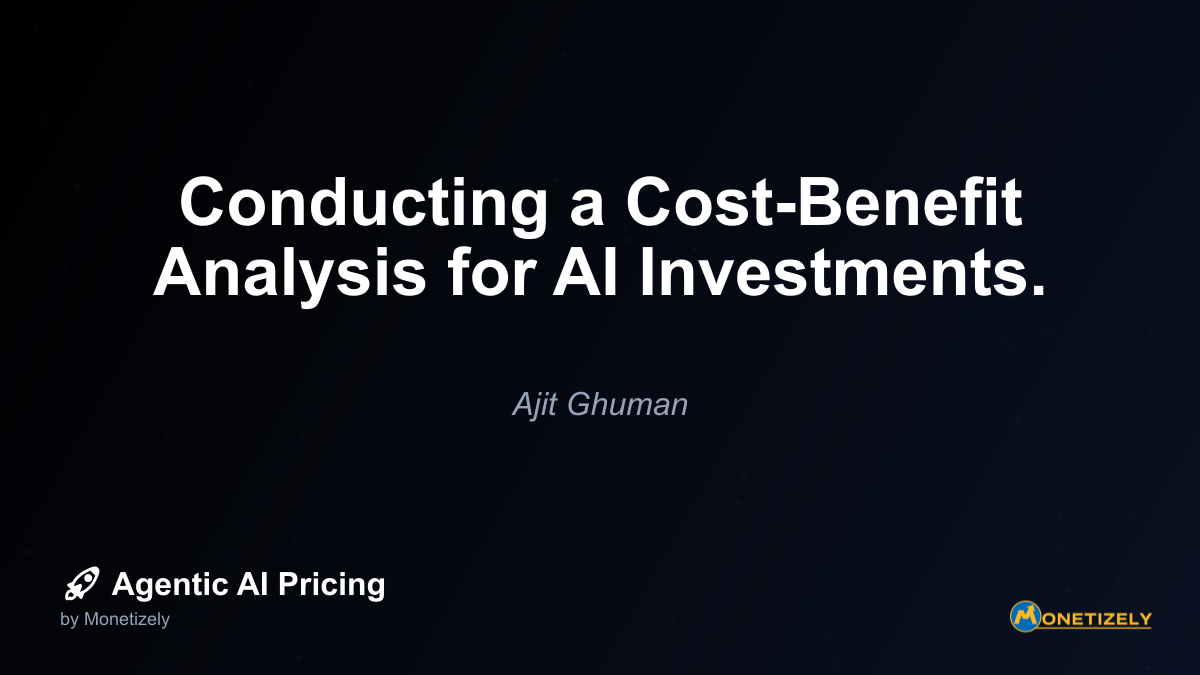
In today’s complex business environment, decision-makers face increasing pressure to adopt artificial intelligence solutions while ensuring responsible resource allocation. A structured cost-benefit analysis provides the framework needed to evaluate AI investments systematically, moving beyond hype to data-driven decisions. This approach helps organizations identify which AI initiatives truly align with business objectives and deliver sustainable value.
Understanding the Fundamentals of AI Cost-Benefit Analysis
Cost-benefit analysis for AI investments follows the same core principles as traditional business case development but requires consideration of AI-specific factors. The process involves systematically cataloging all costs, quantifying benefits, establishing a timeline for returns, and accounting for uncertainty through scenario analysis.
What distinguishes AI cost-benefit analysis from standard investment evaluation is the need to account for:
- Rapid technological evolution affecting long-term viability
- Data requirements and governance considerations
- Integration complexity with existing systems
- Organizational readiness and adoption challenges
- Ethical and regulatory compliance factors
When properly executed, this analysis serves as both a decision-making tool and a roadmap for implementation, helping stakeholders understand not just whether to proceed, but how to maximize return on investment.
Comprehensive Cost Identification for AI Projects
The first step in any robust cost-benefit analysis is thorough cost identification. For AI initiatives, these costs extend well beyond the initial technology purchase.
Initial Investment Costs
- Technology acquisition: Licensing fees, subscription costs, or custom development expenses
- Infrastructure requirements: Cloud computing resources, specialized hardware (like GPUs), networking upgrades
- Data preparation: Collection, cleaning, labeling, and storage of training data
- Integration expenses: API development, middleware, and system modifications
- Security enhancements: Additional cybersecurity measures to protect AI systems and data
Ongoing Operational Costs
- Maintenance and updates: Regular system maintenance, model retraining, and version updates
- Computing resources: Ongoing cloud or on-premises computing costs for model operation
- Data management: Continued data collection, storage, and governance
- Compliance and monitoring: Ensuring continued regulatory compliance and model performance
Human Resource Costs
- Talent acquisition: Hiring AI specialists, data scientists, or ML engineers
- Training and upskilling: Developing internal capabilities to work with AI systems
- Change management: Addressing organizational resistance and facilitating adoption
- Opportunity costs: Resources diverted from other potential projects
Many organizations underestimate these costs by focusing solely on the initial technology investment. A comprehensive analysis must account for the full lifecycle of the AI solution, including potential decommissioning costs if the technology becomes obsolete.
Quantifying Benefits: Moving Beyond the Intangible
The benefits of AI investments can be challenging to quantify, particularly when they involve intangible outcomes like improved decision-making or enhanced customer experience. However, translating these benefits into financial terms is essential for meaningful comparison with costs.
Direct Financial Benefits
- Revenue generation: New products, services, or revenue streams enabled by AI
- Cost reduction: Automation of manual processes, reduced error rates, improved efficiency
- Resource optimization: Better allocation of human and material resources
- Time savings: Accelerated processes and reduced cycle times
Indirect and Strategic Benefits
- Competitive advantage: Market differentiation and positioning
- Customer satisfaction: Improved experiences leading to retention and referrals
- Decision quality: Enhanced insights leading to better strategic choices
- Risk reduction: Improved forecasting and anomaly detection capabilities
- Innovation capacity: Freed resources for higher-value creative work
For each benefit category, establish clear metrics and measurement methodologies. For example:
- Automation benefits can be calculated as: (Hours saved per task × Hourly cost × Number of tasks per year)
- Customer retention improvements can be valued as: (Increase in retention rate × Average customer lifetime value × Number of customers)
- Decision quality enhancements can be estimated through: (Improvement in decision accuracy × Average cost of decision errors)
The key is converting qualitative benefits into quantitative values wherever possible, even if these conversions involve reasonable assumptions that can be tested through sensitivity analysis.
Calculating Payback Period and ROI
Once costs and benefits are identified and quantified, the next step is determining when the investment will break even and what return it will generate over its lifetime.
Payback Period Calculation
The payback period represents the time required for the cumulative benefits to exceed the cumulative costs. For AI investments, this calculation should:
- Account for the time-phased nature of both costs and benefits
- Consider that benefits often accelerate as adoption increases
- Include ongoing costs that may grow with scale
The formula is straightforward:
Payback Period = Initial Investment / Annual Net BenefitHowever, for AI projects with variable benefits and costs over time, a cumulative cash flow approach provides more accuracy:
- Create a timeline showing costs and benefits for each period
- Calculate net cash flow for each period
- Track cumulative cash flow until it turns positive
Return on Investment (ROI) Calculation
ROI provides a percentage return relative to the investment cost:
ROI = (Net Benefit / Total Cost) × 100%For AI investments, consider calculating both:
- Short-term ROI: Returns within the first 1-2 years
- Long-term ROI: Returns over the expected lifetime of the solution (typically 3-5 years for AI)
Additionally, more sophisticated financial metrics may be appropriate:
- Net Present Value (NPV): Accounts for the time value of money
- Internal Rate of Return (IRR): The discount rate that makes NPV zero
- Economic Value Added (EVA): Considers the opportunity cost of capital
These metrics help compare AI investments against other potential uses of capital within the organization.
Scenario Analysis and Risk Assessment
AI investments involve significant uncertainty, making scenario analysis and risk assessment critical components of the cost-benefit framework.
Developing Multiple Scenarios
Create at least three scenarios to account for different possible outcomes:
- Conservative case: Minimal benefits, maximum costs, delayed timeline
- Base case: Expected benefits and costs based on best available information
- Optimistic case: Maximum benefits, minimal costs, accelerated timeline
For each scenario, recalculate payback period and ROI to understand the range of possible outcomes.
Sensitivity Analysis
Identify the variables with the greatest impact on outcomes and test how changes in these variables affect results:
- Implementation timeline extensions
- Adoption rate variations
- Cost overruns in specific categories
- Benefit realization delays
- Technology performance variations
This analysis reveals which factors deserve the most attention during implementation and monitoring.
Risk Assessment and Mitigation
Catalog potential risks in categories such as:
- Technical risks: Model performance, data quality, integration challenges
- Organizational risks: Adoption resistance, skill gaps, governance issues
- Market risks: Changing competitive landscape, shifting customer expectations
- Regulatory risks: Evolving compliance requirements, ethical considerations
For each identified risk:
- Assess probability and impact
- Develop mitigation strategies
- Include mitigation costs in the analysis
- Determine how risks affect different scenarios
This structured approach to uncertainty helps stakeholders understand not just the expected outcome, but the range of possible outcomes and their likelihood.
Implementation Planning Based on Analysis Results
A thorough cost-benefit analysis naturally informs implementation planning by highlighting critical success factors and potential challenges.
Phased Implementation Approach
Based on the analysis, consider a phased approach that:
- Starts with high-benefit, low-risk components
- Establishes clear success metrics for each phase
- Creates decision points for continuing, adjusting, or halting the project
- Allocates resources according to value potential
This approach allows for earlier benefits realization while managing risk and providing opportunities to adjust based on actual results.
Key Performance Indicators (KPIs)
Derive KPIs directly from the benefit categories identified in the analysis:
- Operational metrics (efficiency gains, error reduction)
- Financial metrics (cost savings, revenue growth)
- Strategic metrics (market share, competitive positioning)
- Technical metrics (model performance, system reliability)
These KPIs should be monitored throughout implementation to validate the assumptions made in the cost-benefit analysis.
Real-World Application: Case Study Approach
To illustrate the practical application of these principles, consider the following simplified case study of a midsize financial services company evaluating an AI-powered customer service automation system.
Initial Cost Assessment
- Technology licensing: $250,000 first year, $100,000 annually thereafter
- Infrastructure upgrades: $75,000
- Integration with existing systems: $120,000
- Data preparation and governance: $90,000
- Staff training and change management: $60,000
- AI specialists (2 FTEs): $300,000 annually
Total first-year costs: $895,000 Annual ongoing costs: $400,000
Benefit Quantification
- Customer service labor reduction: $450,000 annually
- Reduced error rates and rework: $120,000 annually
- Improved customer satisfaction leading to retention: $200,000 annually
- Increased capacity allowing business growth: $300,000 annually (starting year 2)
- Competitive advantage from improved service: $250,000 annually (starting year 2)
Total first-year benefits: $770,000 Annual benefits from year 2: $1,320,000
Scenario Analysis Results
Conservative Scenario:
- 30% lower benefits, 20% higher costs
- Payback period: 2.9 years
- 3-year ROI: 42%
Base Scenario:
- Costs and benefits as estimated
- Payback period: 1.7 years
- 3-year ROI: 89%
Optimistic Scenario:
- 20% higher benefits, 10% lower costs
- Payback period: 1.3 years
- 3-year ROI: 137%
Implementation Decision
Based on this analysis, the company decided to proceed with a phased implementation:
- Phase 1: Deploy AI for simple customer inquiries (40% of volume)
- Phase 2: Expand to complex inquiries based on Phase 1 results
- Phase 3: Implement proactive customer engagement features
This approach allowed the organization to realize early benefits while managing risk and validating assumptions before full-scale deployment.
Common Pitfalls in AI Cost-Benefit Analysis
Even well-structured analyses can fall short if they don’t account for AI-specific considerations. Watch for these common pitfalls:
Overestimating Short-Term Benefits
AI solutions often have a learning curve before reaching optimal performance. Avoid assuming day-one perfection by:
- Building in ramp-up periods for benefit realization
- Accounting for initial performance limitations
- Recognizing that organizational adoption takes time
Underestimating Ongoing Costs
AI systems aren’t “set and forget” technologies. Account for:
- Model drift requiring regular retraining
- Data quality monitoring and maintenance
- Evolving integration requirements as systems change
- Growing computing needs as usage expands
Neglecting Organizational Readiness
Technical feasibility doesn’t guarantee successful implementation. Evaluate:
- Current data maturity and governance
- Technical skill availability and gaps
- Cultural readiness for AI adoption
- Leadership alignment and commitment
Ignoring Ethical and Regulatory Considerations
Compliance issues can derail AI projects regardless of financial returns. Include:
- Privacy impact assessments
- Bias testing and mitigation
- Explainability requirements
- Industry-specific regulatory compliance
Conclusion: Beyond the Numbers
A comprehensive cost-benefit analysis provides essential structure for AI investment decisions, but the final determination should integrate both quantitative and qualitative factors. The most successful organizations use this analysis not just to decide whether to proceed, but to shape how they implement AI solutions.
By thoroughly identifying costs, quantifying benefits, calculating financial returns, and accounting for uncertainty, decision-makers can move beyond hype cycles to make informed choices about AI investments. This structured approach ensures alignment between technology investments and business objectives, maximizing the potential for successful outcomes.
Remember that the cost-benefit analysis should be a living document, revisited and refined as implementation progresses and new information becomes available. This iterative approach allows organizations to learn from experience and continuously improve their AI investment strategy.
For organizations just beginning their AI journey, starting with smaller, well-defined projects allows for developing cost-benefit analysis skills while managing risk. As experience grows, this analytical framework can be applied to increasingly complex and transformative AI initiatives, building a portfolio of investments that collectively drive organizational value.
Co-Founder & CEO
Ajit is the author of Price To Scale, a top book on SaaS Pricing and is the Founder of Monetizely. Ajit has led and worked in pricing and product marketing at firms like Twilio, Narvar and Medallia. His work has been featured in Forbes and VentureBeat. Ajit regularly consults with software companies from Seed stage to post-IPO on pricing strategy. Ajit is also a highly-rated co-instructor for 'The Art of SaaS Pricing and Monetization' on Maven.
Pricing Strategy Audit
Let our experts analyze your current pricing strategy and identify opportunities for improvement. Our data-driven assessment will help you unlock untapped revenue potential and optimize your AI pricing approach.

